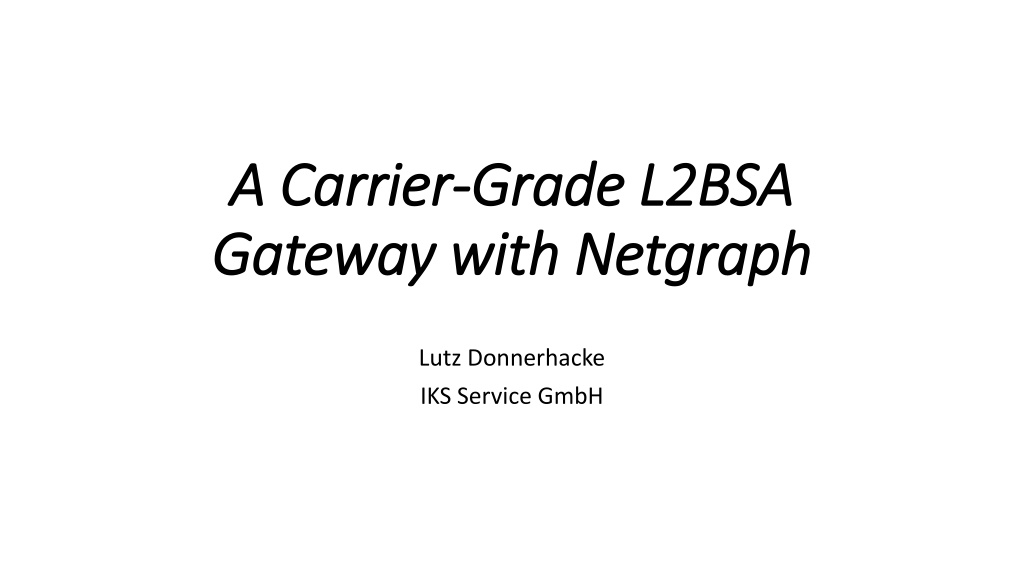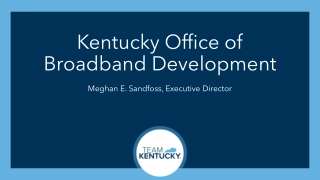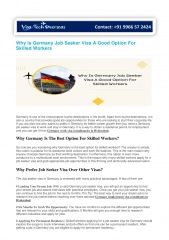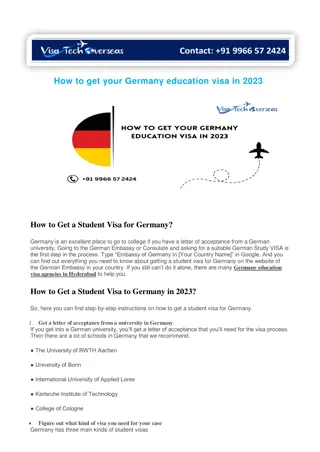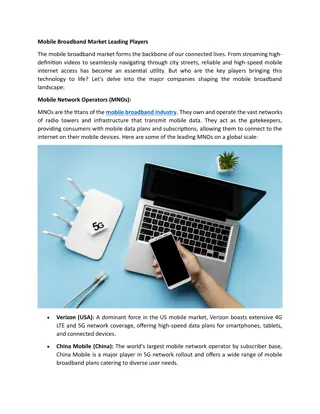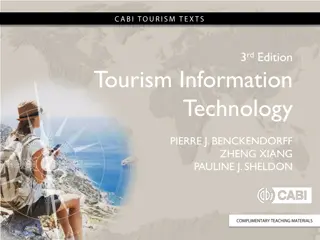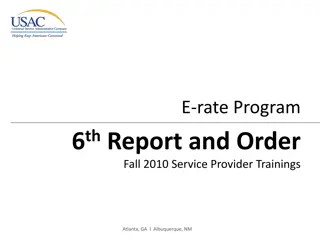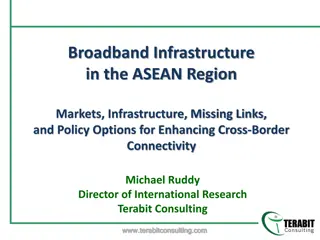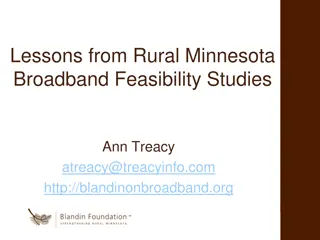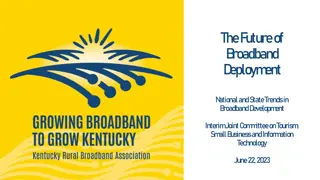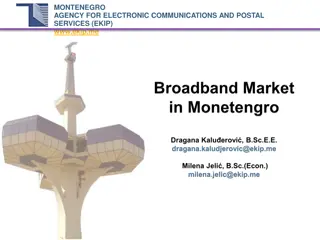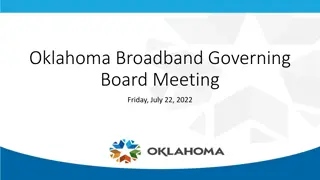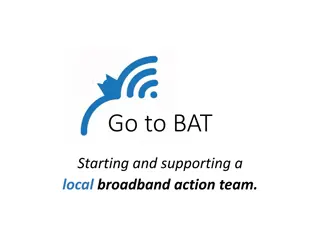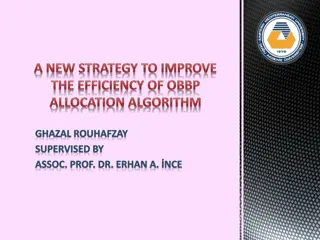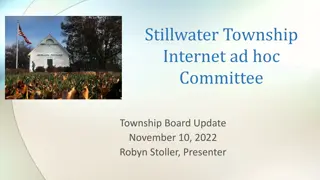Evolution of Broadband Internet in Germany
Personal background of Lutz Donnerhacke, founder of Individual Network e.V., and his journey from C64 to Linux to FreeBSD. Insights into the broadband landscape in Germany, including the historical context, political influence, and technological advancements. Discussion on Layer 2 bitstream access as a solution to address monopolies and commercial aspects affecting ISPs in the region.
Download Presentation

Please find below an Image/Link to download the presentation.
The content on the website is provided AS IS for your information and personal use only. It may not be sold, licensed, or shared on other websites without obtaining consent from the author. Download presentation by click this link. If you encounter any issues during the download, it is possible that the publisher has removed the file from their server.
E N D
Presentation Transcript
A Carrier A Carrier- -Grade L2BSA Grade L2BSA Gateway with Gateway with Netgraph Netgraph Lutz Donnerhacke IKS Service GmbH
Personal background Grown up with a C64 in Eastern Germany Short excurse to MSDOS and Win3.11 Switched to Linux in 1992 Individual Network e.V. in Germany grassroot Internet for ordinary people Build regional ISP in 1996 infrastructure provider of two regional Broadband-ISPs in Thuringia Switch to FreeBSD in 2013 Replace commercial LNS by netgraph/MPD
Broadband in Germany 1983 CDU (German conservatives) choose copper over fiber Probably due to corruption via the minister Schwarz-Schilling 1995 CDU privatization created Deutsche Telekom Got the whole cable network as gift, hence a (copper) monopoly 1998 Unbundling of last mile to competitors 2009 Vectoring for increased bandwith over copper (DSL) All lines need to be handled by a single DLSAM Unbundling not longer possible To break the local monopoly, regulated bitstream access was introduced We are still a copper DSL based country! Fiber is rolled out 2022 but expected to be available not before 2024
Layer2 Bitstream Access (regulated) Solution for the layer1 monopoly created by vectoring DSL port in sync: Hand over all layer2 traffic to a different ISP Requires a transport layer which maps 1:1 to the port No opportunity for smart networks (like Multicast distribution) Problem: How to handle bandwidth discrepancy? Technical approach (A10NSP) Add a VLAN tag to all traffic from the port (IEEE 802.1ad) Can only handle up to ~4000 customers per aggregation line Add current line speed in DHCP option or PPP LCP option Shape downstream traffic to signaled speed (or pay fines)
Commercial aspects Numbers 1 Mio households in Thuringia => ~260 interconnection points About 50 interconnections needed for DTAG operated areas Most rural regions are operated by us (not DTAG) You need a line to each area, where your customer is pay for a 1G/10G WAN + interconnection fee get a couple of customers switching to you We need a very cheap termination device Commercially available: Large PPPoE appliances We like to have DHCP and IPv6 in multiple VLANs (i.e. separate VoIP)
What happens on wire? Customer Payload (IP) A10NSP Interconnection Payload (IP) C-VLAN Tag C-VLAN Tag Source-MAC S-VLAN Tag Destination-MAC Source-MAC Destination-MAC
What really happens on wire Customer Payload (IP) A10NSP Interconnection Payload (IP) 140 140 01:02:03:04:05:06 27 01:02:03:07:08:09 01:02:03:04:05:06 01:02:03:07:08:09
What really happens on wire? Customer Payload (IP) A10NSP Interconnection Payload (IP) 140 140 01:02:03:04:05:06 35 01:02:03:07:08:09 01:02:03:04:05:06 01:02:03:07:08:09
What really happens on wire! Customer Payload (IP) A10NSP Interconnection Payload (IP) 140 140 01:02:03:04:05:06 35 01:02:03:07:08:09 01:02:03:04:05:06 01:02:03:07:08:09 On every DSL resync A new, dynamic S-VLAN is used Traffic send to the old S-VLAN is lost immediately PPP will drop the line and resync DHCP does not even notice
Simplify by adding complexity static Customer A10NSP Interface Rotate Service Interface Line Payload Payload Payload Payload Payload Payload Payload C-Vlan C-Vlan C-Vlan S-Vlan S-Vlan S-Vlan Src-MAC Src-MAC S-Vlan S-Vlan A-Vlan A-Vlan Src-MAC Dst-MAC Dst-MAC Src-MAC A-Vlan C-Vlan Src-MAC Dst-MAC Dst-MAC Src-MAC Src-MAC Dst-MAC Dst-MAC Dst-MAC Customer traffic handled per service QoS per interface QoS per service
Todo list for netgraph Blue/Red: Existing nodes Green: Insufficient node Orange: Missing node Yellow/Rose: Userspace scripting
Necessary modifications to FreeBSD Mandatory D21846: Add 802.1Q ethertypes used in the wild D24179: ixl: Permit 802.1ad frames to pass though the chip D22076: netgraph/ng_vlan_rotate: IEEE 802.1ad VLAN manipulation netgraph node type Bridging D21803: netgraph/ng_bridge: Replace NG_BRIDGE_MAX_LINKS with unlimited links D23840: netgraph/ng_base: Allow larger BINARY2ASCII conversions D23963: netgraph/ng_bridge: Introduce "uplink" ports without MAC learning D28123: netgraph/ng_bridge: become multithreaded QoS D22140: netgraph/ng_tag: Variable length data can not be set for all length D22110: netgraph/ng_car: Add color marking code Debugging D21968: netgraph/ng_source: Allow ng_source to inject into any netgraph network D21965: usr.sbin/ngctl: Generate more compact GraphWiz output
Real world problems Same MAC in different VLANs Tagged and untagged from the same customer device (CPE) Overlapping MACs from different CPEs due to MAC increase per VLAN Different CPE configuration Same service may come in different C-Vlans (or untagged) Need a decision mechanism to choose the right one Erroneous transmission of data rates No DHCP exchange due to signaled 0 bps (enforced!) Broken interface cards (ixl) do not transmit 802.1ad Customer untagged is an IEEE violation, but works
Real world bridge table MAC Link Line S-Vlan C-Vlan 08:96:d7:46:fa:ec hsi:link61 ixl0 2 140 08:96:d7:46:fa:ed voip:link4249 ixl0 2 142 2c:91:ab:bb:4b:76 hsi:link7554 ixl10 10 140 2c:91:ab:bb:4b:77 voip:link3536 ixl10 10 142 3c:a6:2f:fe:ac:03 voip:link2299 ixl10 18 142 3c:a6:2f:fe:ac:02 hsi:link3507 ixl10 18 untagged 2c:3a:fd:dd:39:2a hsi:link3588 ixl1 49 140 2c:3a:fd:dd:39:2b voip:link5014 ixl1 49 142 00:01:21:01:44:2d hsi:link9805 ixl8 5 180 00:01:21:01:44:2d voip:link4426 ixl8 5 182
Questions? https://lutz.donnerhacke.de/Blog https://www.thyotec.de/ https://www.netkom.de/Privatkunden/Internet
